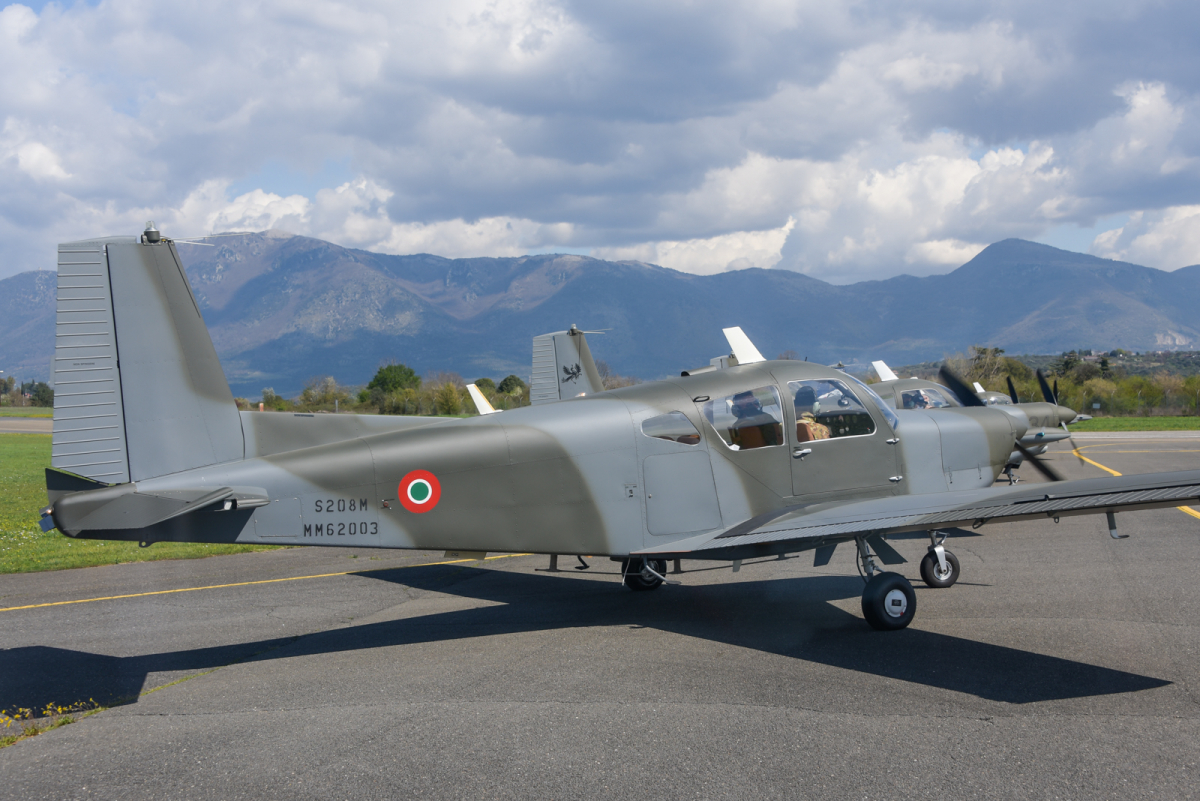The Italian Air Force (Aeronautica Militare) has lost two instructor pilots in a mid-air collision. For some unexplained reason, the two U-208A (S.208M) light aircraft collided and crashed into the ground.
Air collision
On March 7 at approximately 11:00 a.m. local time, two Italian Air Force (Aeronautica Militare) S.208M servicing and liaison aircraft were on a pre-planned training flight northeast of Rome. For a reason still unknown, the two planes collided. One of the planes crashed into a residential area in the village of Guidonia (Lazio, Italy) while the second crashed into a nearby field.
Both pilots unfortunately died in the crash of their aircraft;
- Lieutenant Colonel Giuseppe Cipriano had accumulated more than 6,000 hours of flight time on various aircraft as well as in external operations. He was an instructor pilot with the 60° Stormo on U208A (Italian designation of the S.208M), G103 glider and the Aermacchi MB339-CD training aircraft. He had joined the Aeronautica Militare in 1996.
- Major Marco Meneghello accumulated more than 2,600 flight hours on various aircraft and also flew in external operations. He was also an instructor pilot at 60° Stormo on U208A and G103. He had joined the Aeronautica Militare in 1999.
The pilots were based at the nearby Guidonia Air Base.
U208A/S.208M
This is a militarized version of the S.205 for the Italian Air Force. It is a single-engine aircraft built by the company SIAI-Merchetti (now Aermacchi). The aircraft flew for the first time on May 22, 1967 and differed from the S.205 by a modified on-board instrumentation, a more powerful engine, the possibility of towing a glider with the addition of a hook and the absence of tanks at the end of the wings. It is mainly used to tow gliders, to perform liaison missions (1 pilot, 4 passengers) and on very rare occasions, to train pilots (the training is mostly done on SF.260EA, MB.339 or T-346A aircraft).
Other technical characteristics:
Size: 10.86 meters wingspan, 8.10 meters long, 2.89 meters high
Maximum takeoff weight: 1.5 tons
Propulsion: Avco Lycoming 0-540-E4A5 260CV piston engine
Maximum speed: 285 km/h
Découvrez cet article sur Air&Cosmos

